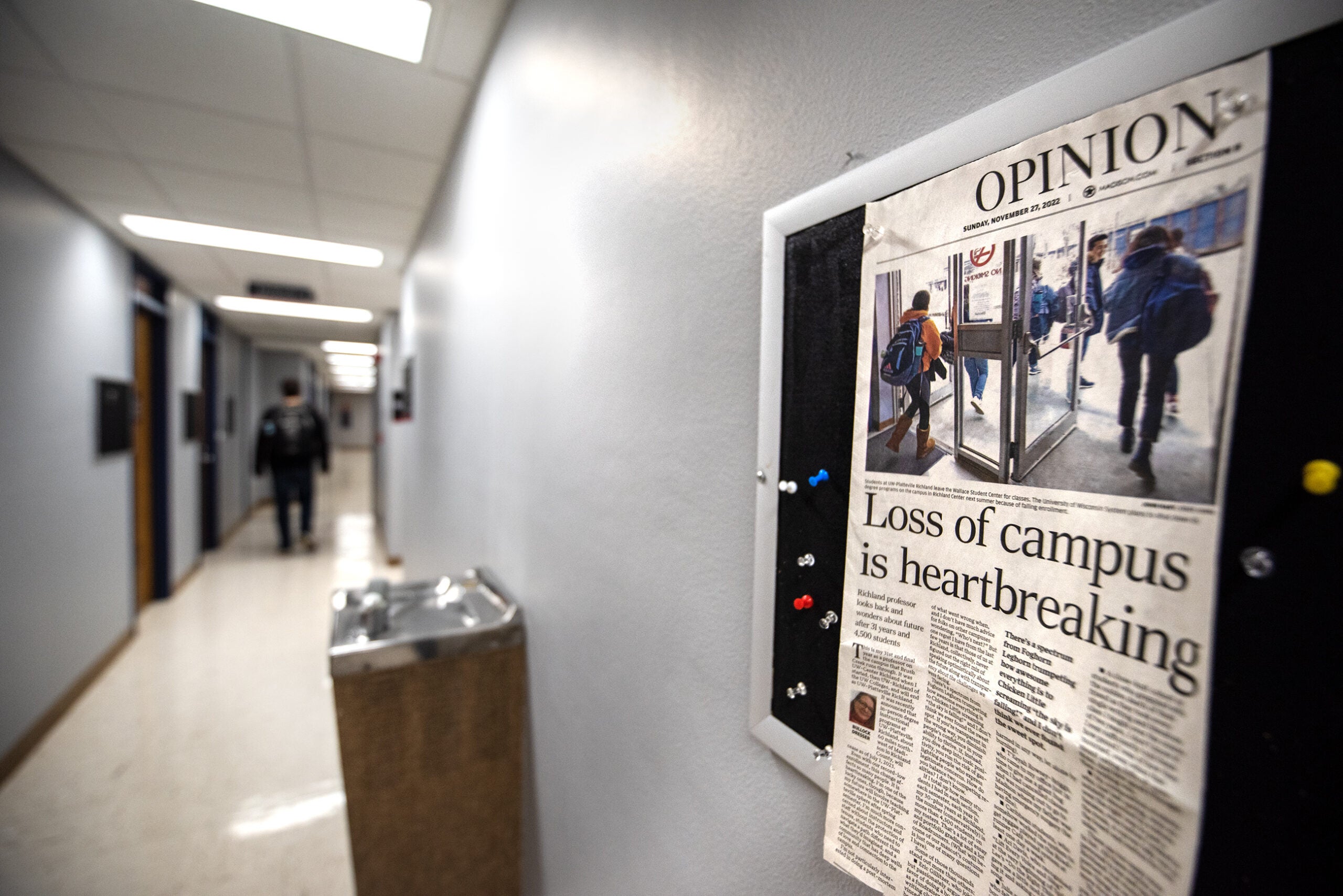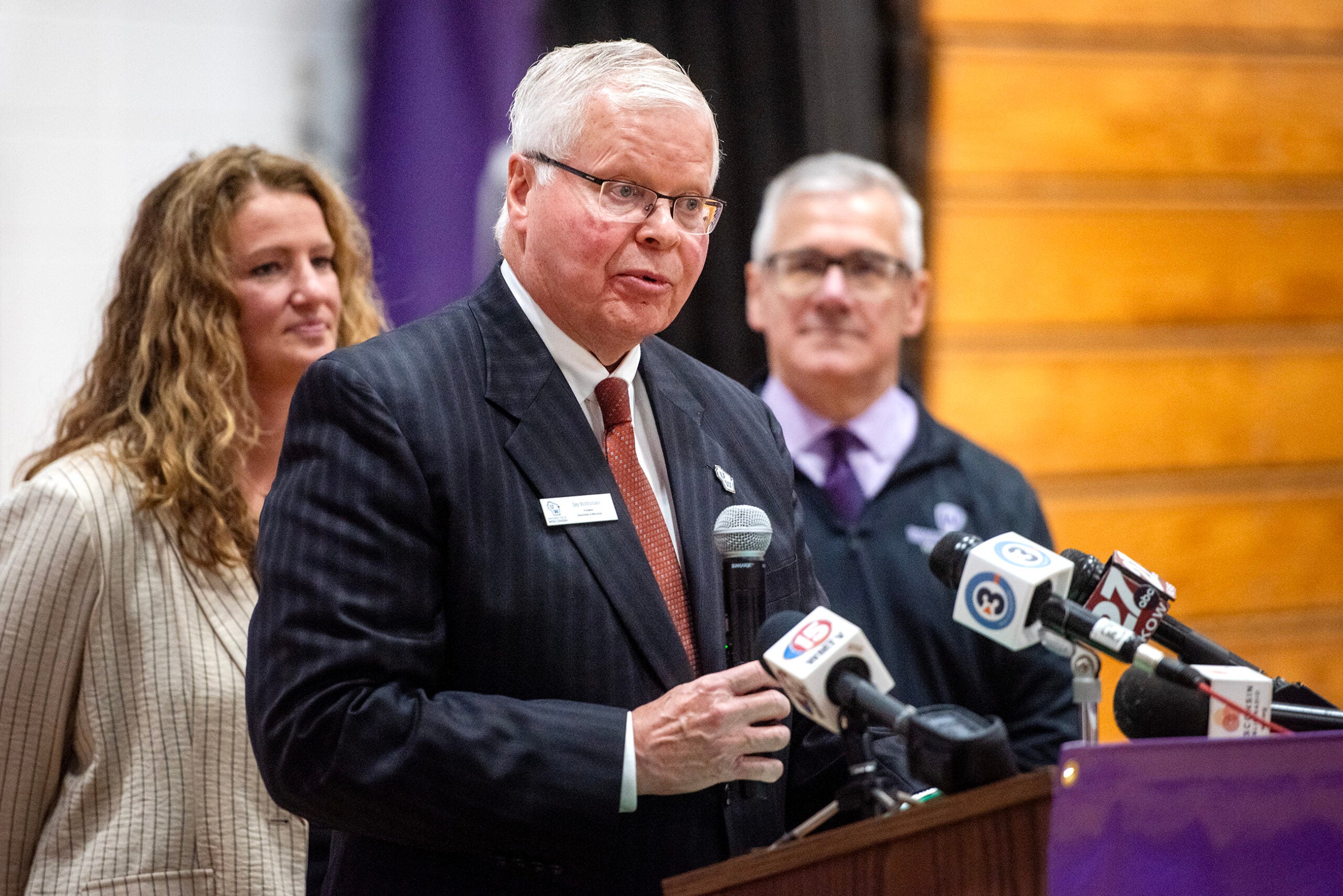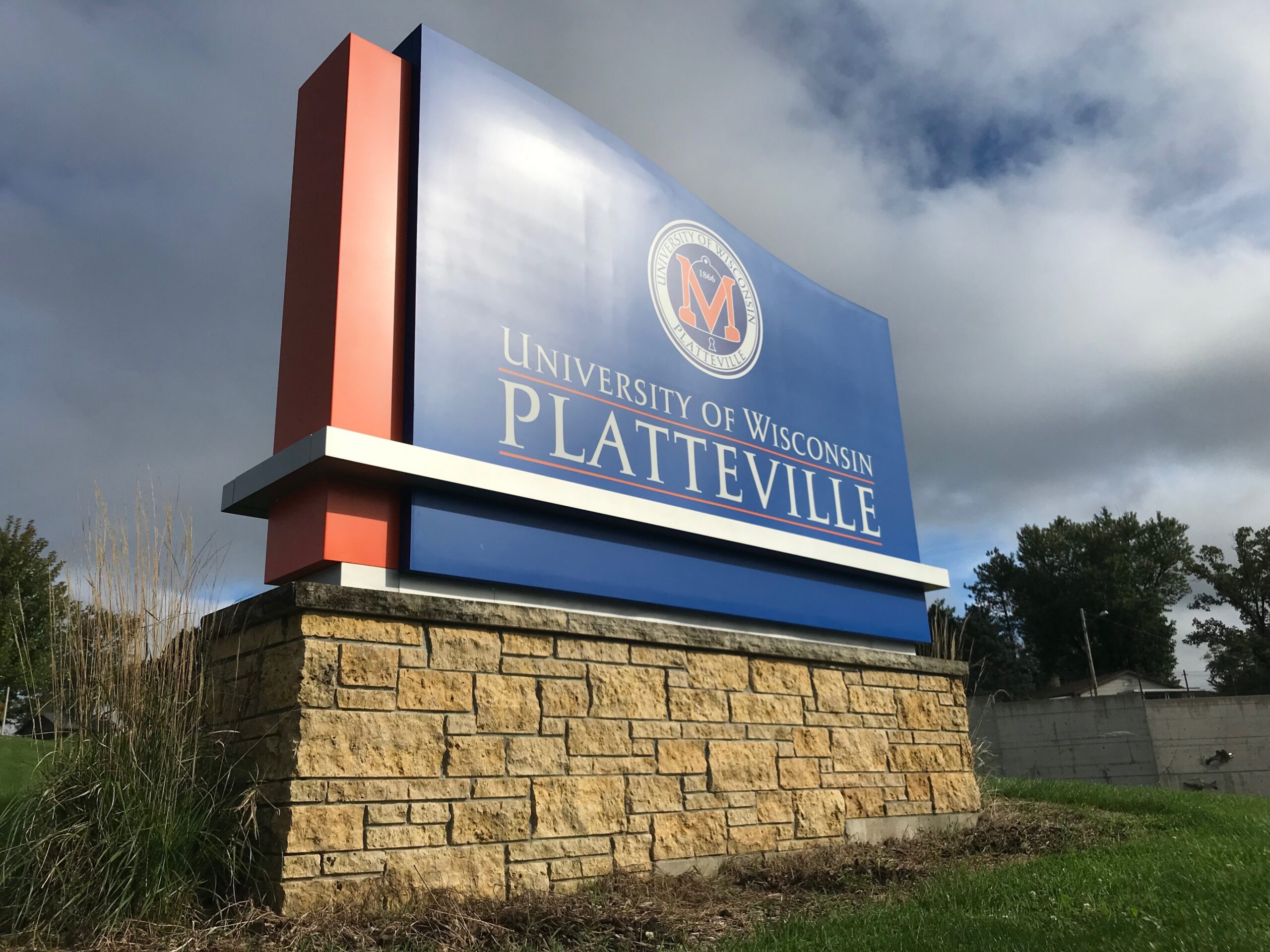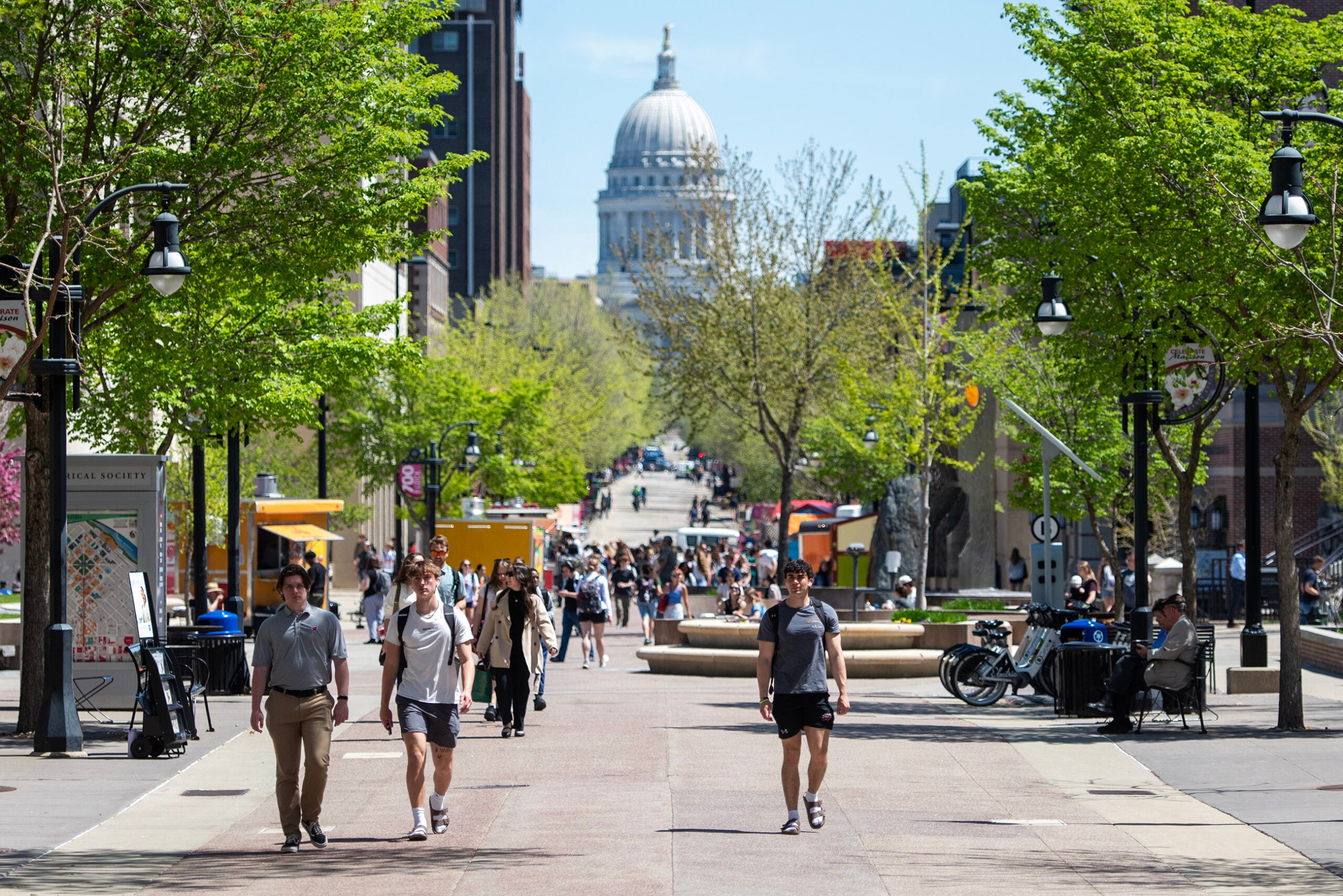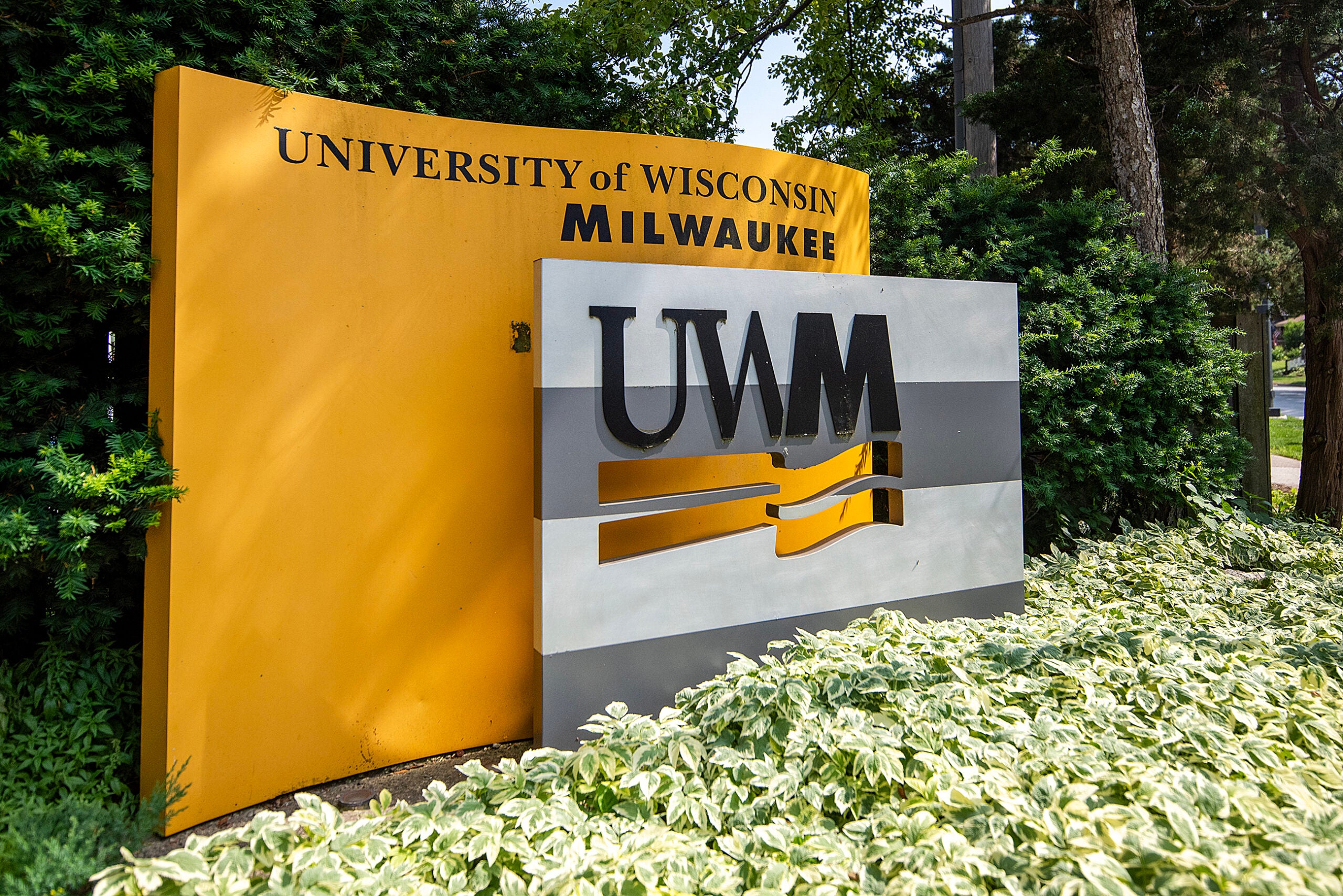Spring enrollment data from the University of Wisconsin System show continued declines at many two-year campuses and some four-year universities.
Enrollment across all state public colleges and universities showed little change, with an average 1.6 percent decline this spring, according to final UW System data. The average among all four-year universities was down 1.4 percent while the decline across the state’s 13 two-year campuses dropped by 8.6 percent.
The declines were predictable, said Jeff Burhandt, UW System interim vice president for university relations. He said this was partly because enrollment tends to drop with winter graduations following the fall semester.
News with a little more humanity
WPR’s “Wisconsin Today” newsletter keeps you connected to the state you love without feeling overwhelmed. No paywall. No agenda. No corporate filter.
He added enrollment at the UW System’s two-year campuses has trended downward with other two-year campuses nationwide. Data from the National Student Clearinghouse Research Center show public, two-year institutions saw an average 3.4 percent enrollment decline in fall 2021 and a 10.1 percent decline in fall 2020.
Burhandt noted it has been five years since the state’s two-year colleges were merged with four-year universities. He cited new programs like a master’s degree in a business administration program at UW-Stevens Point’s Wausau campus and a new engineering program at UW-Green Bay’s Marinette location as signs of growth.
“And we’re seeing some of the main campuses have been very creative and found some great uses for the branch campuses,” Burhandt said.
Still, some two-year campuses saw notable decreases in the number of students this spring compared to last. UW-Platteville’s Richland campus saw overall enrollment drop to 51 students this spring, down from 82 in spring 2021 for a decline of 37.8 percent.
The last UW System campus to close was the UW-Center-Medford, which shut its doors in 1981 after enrollment fell to 70 students.
Victoria Livingston, UW-Platteville executive director for enrollment and student success, said there are no plans to close the university’s Richland campus. She said administrators are working to find the best way the small campus can serve the Richland Center area.
“We’re really committed to making sure that that campus can be successful and that we can find the right students to match the very personalized experience that that campus offers,” Livingston said.
UW-Oshkosh’s Fox Cities campus reported 611 students this spring compared to 787 in 2021 for a decline of 22.4 percent.
Enrollment at UW System two-year campuses has been falling for more than a decade, but some have bucked the trend.
UW-Green Bay campuses in Manitowoc, Marinette and Sheboygan increased enrollment this spring by 22.5 percent, 12.6 percent and 10.2 percent respectively. UW-Stevens Point at Wausau posted an enrollment gain of 22 students this spring, or 5.1 percent, over spring 2021. UW-Platteville Baraboo noted an enrollment growth of 2.4 percent, or four students, this spring.
While two-year campuses have generally faced the most significant enrollment challenges in recent years, some four-year UW schools have also lost students.
This spring, enrollment at UW-Platteville’s main campus was down 609 students compared to spring 2021, which works out to a decline of 9.4 percent.
Livingston said her office anticipated to see declines in spring enrollment this year compared to spring 2021 because enrollment was down 9 percent in fall 2021 compared to fall 2020. She said that indicates “student persistence,” or the number of individuals re-enrolling from one semester to the next, is high.
UW-Platteville has doubled its investment in undergraduate scholarships, Livingston said, and waived a $100 enrollment deposit to help students and families facing pandemic-related financial issues.
Livingston said the campus has seen more scholarship applications and more students signing up for rooms in residence halls.
“We are, at the moment, cautiously optimistic with our fall enrollment numbers,” Livingston said. “We’re trending positive.”
UW-River Falls reported the second-largest drop of 482 students, or 9 percent, compared to 2021’s spring semester.
A statement emailed to Wisconsin Public Radio by the university’s communications office said UW-River Falls, like other colleges in Wisconsin and the United States, is facing demographic changes. It also pointed to a strong economy in the St. Croix Valley area with businesses competing for individuals that may be considering higher education.
“We are working closely with regional employers to ensure that the value of a four-year degree remains a priority for them as they seek to address their workforce challenges,” read the statement.
It continued, stating enrollment trends are best captured based on official fall numbers, due to declines in enrollment from fall to spring semesters.
Of the UW System’s four-year universities, UW-Superior saw a 5.8 percent increase in enrollment this spring, with 136 more students than spring 2021. The only other university to post spring enrollment gains was UW-Madison with an increase of 3 percent.
Jeremy Nere, UW-Superior senior enrollment officer, said part of that growth was due to recruitment of more international students from places like Ethiopia and Nepal.
“We brought in our largest international class, not only that we’ve had for any spring enrollment, but I think it was larger than anything that we’ve seen in the last decade,” Nere said.
The northernmost system school also saw an increase in the number of graduate students, Nere said. This spring there were 423 enrolled, up about 10 percent compared with spring 2021.
Nere said the fall is looking positive, too.
“Right now for fall, registrations are up about 250 compared to this point in time last year, which is really strong for us,” Nere said.
Editor’s note: Wisconsin Public Radio is a service of the University of Wisconsin-Madison and the Wisconsin Educational Communications Board.
Wisconsin Public Radio, © Copyright 2026, Board of Regents of the University of Wisconsin System and Wisconsin Educational Communications Board.

